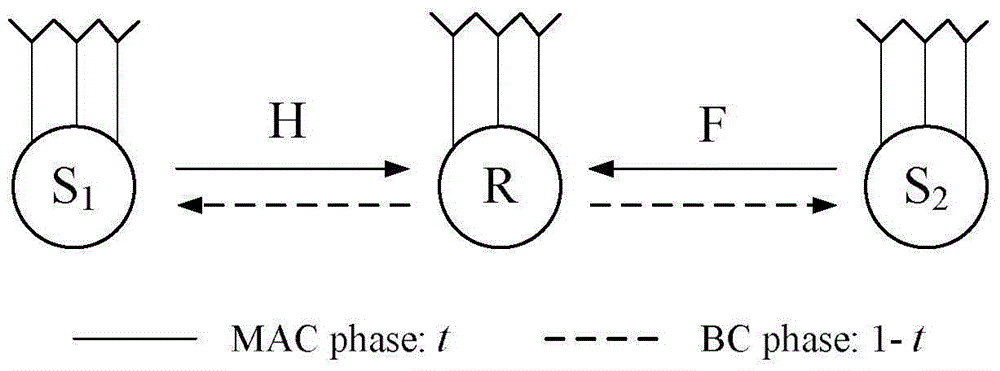Multi-antenna two-way relaying compressing-forwarding method based on joint eigen-decomposition
A two-way relay and joint feature technology, applied in radio transmission systems, advanced technologies, electrical components, etc., can solve the problems that the advantages of multi-antenna systems cannot be reflected, the characteristics of multi-antennas cannot be fully utilized, and system performance is reduced
- Summary
- Abstract
- Description
- Claims
- Application Information
AI Technical Summary
Problems solved by technology
Method used
Image
Examples
Embodiment Construction
[0084] In order to make the above objects, features and advantages of the present invention more comprehensible, the present invention will be further described in detail below in conjunction with the accompanying drawings and specific embodiments.
[0085] Such as figure 1 As shown, in the multi-antenna two-way relay channel, the two source nodes S1 and S2 are divided into (S1 and S2 are the labels of the two source nodes, for the convenience of the following description) respectively m1 and m2 (m1 and m2 are the number of antennas ) antennas, and the relay node R has mr antennas. The channel between the two source nodes S1 and S2 and the relay node R has duality, that is, the channel matrix is expressed as (H 1R Indicates the channel between S1 at the sending end and R at the receiving end, H R1 Indicates the channel between R at the sender and S1 at the receiver, F 2R Indicates the channel between S2 at the sending end and R at the receiving end, F R2 Indicates the ...
PUM
 Login to View More
Login to View More Abstract
Description
Claims
Application Information
 Login to View More
Login to View More - R&D
- Intellectual Property
- Life Sciences
- Materials
- Tech Scout
- Unparalleled Data Quality
- Higher Quality Content
- 60% Fewer Hallucinations
Browse by: Latest US Patents, China's latest patents, Technical Efficacy Thesaurus, Application Domain, Technology Topic, Popular Technical Reports.
© 2025 PatSnap. All rights reserved.Legal|Privacy policy|Modern Slavery Act Transparency Statement|Sitemap|About US| Contact US: help@patsnap.com



